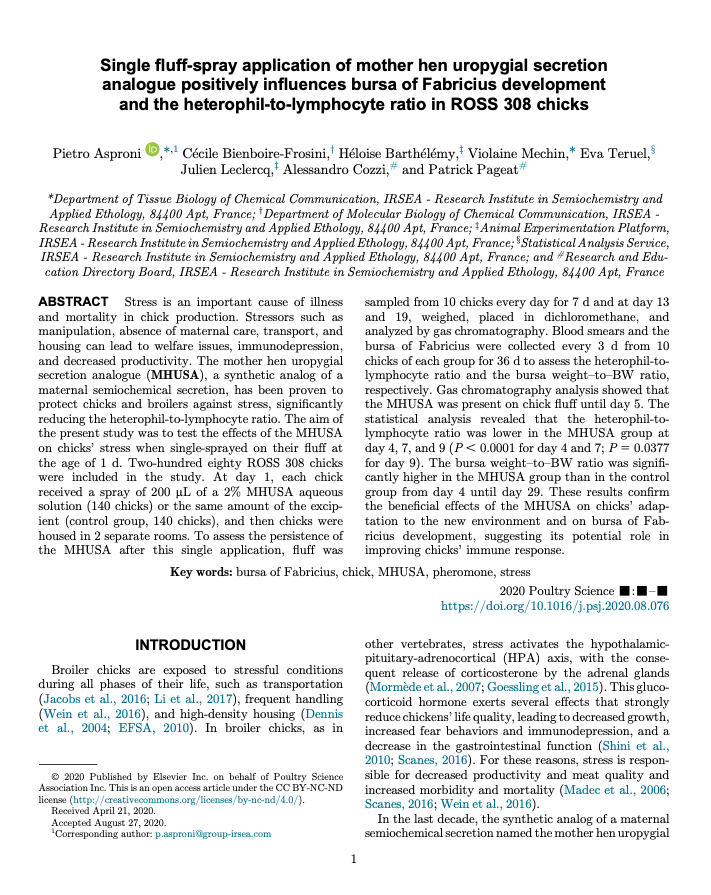Abstract:
Stress is an important cause of illness and mortality in chick production. Stressors such as manipulation, absence of maternal care, transport, and housing can lead to welfare issues, immunodepression, and decreased productivity. The mother hen uropygial secretion analogue (MHUSA), a synthetic analog of a maternal semiochemical secretion, has been proven to protect chicks and broilers against stress, significantly reducing the heterophil-to-lymphocyte ratio. The aim of the present study was to test the effects of the MHUSA on chicks’ stress when single-sprayed on their fluff at the age of 1 d. Two-hundred eighty ROSS 308 chicks were included in the study. At day 1, each chick received a spray of 200 mL of a 2% MHUSA aqueous solution (140 chicks) or the same amount of the excip- ient (control group, 140 chicks), and then chicks were housed in 2 separate rooms. To assess the persistence of the MHUSA after this single application, fluff was
sampled from 10 chicks every day for 7 d and at day 13 and 19, weighed, placed in dichloromethane, and analyzed by gas chromatography. Blood smears and the bursa of Fabricius were collected every 3 d from 10 chicks of each group for 36 d to assess the heterophil-to- lymphocyte ratio and the bursa weight–to–BW ratio, respectively. Gas chromatography analysis showed that the MHUSA was present on chick fluff until day 5. The statistical analysis revealed that the heterophil-to- lymphocyte ratio was lower in the MHUSA group at day4,7,and9(P,0.0001forday4and7;P50.0377 for day 9). The bursa weight–to–BW ratio was signifi- cantly higher in the MHUSA group than in the control group from day 4 until day 29. These results confirm the beneficial effects of the MHUSA on chicks’ adap- tation to the new environment and on bursa of Fab- ricius development, suggesting its potential role in improving chicks’ immune response.
Auteur: Pietro Asproni , Cecile Bienboire-Frosini, Heloise Barthelemy, Violaine Mechin, Eva Teruel, Julien Leclercq, Alessandro Cozzi, and Patrick Pageat
En savoir plus: https://www.sciencedirect.com/science/article/pii/S0032579120306234?via%3Dihub

